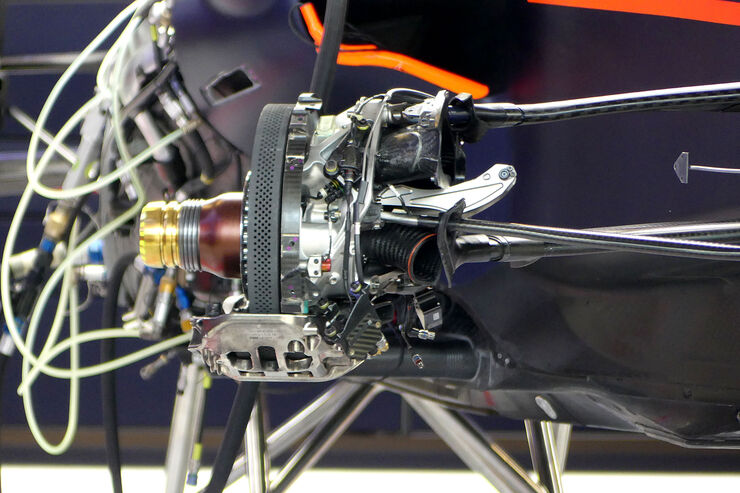I think Merc, STR and RB are the main teams experimenting with this. I'm not sure what what the other teams have or have not developed.
With Merc & STR there is the obvious detail of the exposed outboard upper control arm pivots. While this may have been aero-related, it may also have also have been kinematics related.
Red Bull's approach I believe to be different, and maintains all the pivot points within the wheel. Consider the following photo of the RB13's front suspension, taken late in the season. Pay special attention to the pushrod mount, a shiny metallic arm sprouting off the center of the wheel upright.
Morteza wrote: ↑19 Oct 2017, 19:00

Via AMuS
Sevach wrote: ↑31 Oct 2017, 13:32

New front suspension.
Note how the pushrod mounts to an arm which places the pivot point well outside of the kingpin axis. I've never noticed such a mounted method before. It struck me as unique when I first saw it. Essentially they are steering the outboard end of the pushrod through a wider arc orbiting the kingpin axis.
Steering would therefore alter the distance and angle between the pushod outer pivot and the bellcrank. Which is probably always the case unless the pushrod out pivot intersects the kingpin axis; but in this application, more exaggerated.
Depending on the exact location of the outboard pushrod pivot relative to the kingpin axis, it would be possible to have steering angle compress and unload the front suspension, thus altering ride height, and powered by the steering rack.

There's plenty of room within the A-arms for the pushrod to displace fore-to-aft as its outer end orbits the kingpin axis. It looks as though, in the photo above, the pushrod mounts aft of said axis, which would cause the inside steered wheel to compress the inside corner suspension, while the outside wheel would relieve the outside corner suspension. Said another way: when turning left, the front left suspension would compress, while the front right suspension would extend. This would roll the car slightly into the turn, which seems ideal, as well as place the inside corner of the front wing lower to the ground.
All this being said, we're still talking about only a few millimeters of alteration for these suspension pivot points. But this gets magnified by the distance between those points and the road surface, and the shape of the tire.



